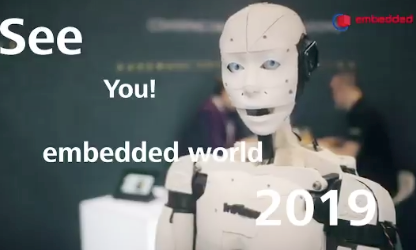Next week, The Zephyr™ Project will be joining some 1,000 exhibitors atEmbedded World in Nurnberg, Germany. The event, which is slated to take place from February 26-28, offers the embedded community the opportunity to obtain information about new products and innovations, enter into an exchange and to maintain and develop valuable contacts.

The Zephyr Project members including Antmicro, Foundries.io, Intel, Nordic Semiconductor, NXP and SiFive will be at the Hall 4: Booth 4-170 and will offer interactive IoT demos powered by the Zephyr RTOS, which supports multiple hardware architectures and is built with safety and security in mind.
Additional details about the interactive demos are below:
- Antmicro and Renode demo – This demo will showcase how the open source Renode simulation framework can be used to test multi-node Zephyr setups, including ARM and RISC-V based platforms. Using human-readable scripts and configuration, Renode allows you to easily create complex CI installations, enabling better testability of real products. You will see how to test production-ready code without the hassle of connecting multiple pieces of hardware together against corner-case conditions unachievable in testing rigs.
- NXP i.MX 6SoloX (UDOO Neo) with RPMsg Protocol, a Multicore demo with Linux running on A9, Zephyr running on M4 – This demonstration shows how to leverage asymmetric co-processors of modern SoCs on the example of i.MX6SoloX and Udoo Neo board. The embedded Cortex-M4 core is running Zephyr RTOS which implements various low speed serial peripherals (UART, SPI, I2C) in software using GPIO. Cortex-M4 communicates with the embedded Cortex-A9 core running Linux Kernel using the RPMsg protocol. On the Linux side a kernel module is used to present implemented serial peripherals to the user space as regular serial, SPI or I2C interface (e.g. /dev/ttySx). The benefits of such approach consist in the possibility of extending existing set of peripherals without any additional hardware cost and the possibility to place selected peripheral at virtually any available GPIO pin. Thanks to exporting the interfaces to the user space, it can be accessed for example by a Python script.

- Foundries.io Demo using OpenThread on Zephyr with Blockchain data publishing controlling Smart Lights and Candy Dispenser – Foundries.io will showcase their Zephyr microPlatform (ZmP) using OpenThread and 802.15.4. Providing an OpenThread gateway which acts as a smart speaker enabling users to issue voice commands like “Hey Google, turn it on” to turn on a light, or “Hey Google, start it” to dispense candy. The connected lights will be running ZmP with OpenThread, and the candy dispenser will using 6lowpan over BLE.
- Intel S1000 Speech Kit that showcase basic Alexa functionality
- Nordic Semiconductor Gaming Mouse, Zephyr on an nRF52-based low-latency, high report rate gaming mouse prototype
- Zephyr on the Nordic nRF91 Development Kit, including a BLE to LTE gateway
- SiFive Demo, Zephyr Running on a SiFive HiFive1 Development Board
- Zephyr running as a guest on ACRN Hypervisor
Experts will be on-site to discuss the advantages of the Zephyr Project and will readily explain how open source derived RTOS solutions will come to power the ever growing ecosystem of IoT devices.
If you want to learn more about the Zephyr RTOS, Zephyr Project member Marek Novak from NXP will present a session titled, “Software Defined Peripherals in Linux Using Zephyr and RPMsg.” Join the session on Wednesday, February 27 at 11:30 am – 12 pm at the Conference Counter NCC Ost. Click here to learn more about the session.
Stop by the Zephyr Booth (Hall 4: Booth 4-170) at Embedded World and keep up to date with photos on @ZephyrIoT! Or, join the conversation on the Zephyr Slack Channel – https://zephyrproject.slack.com/.